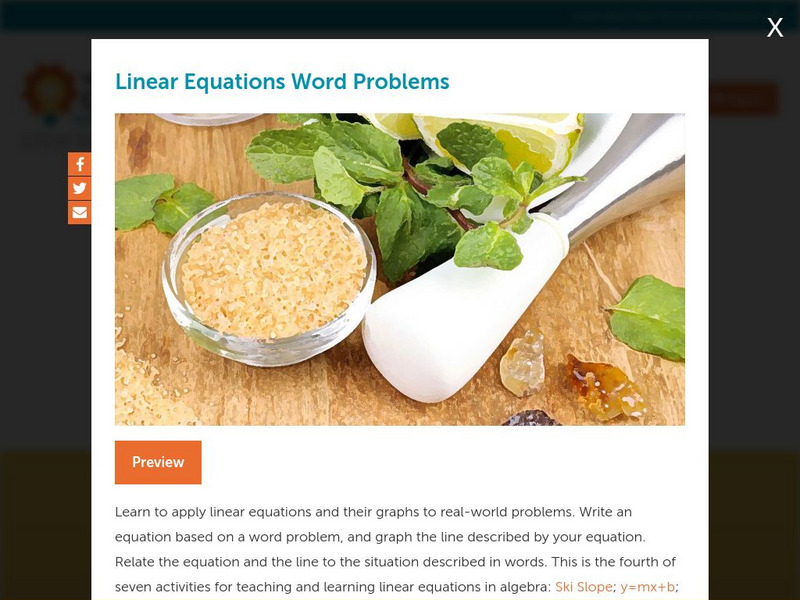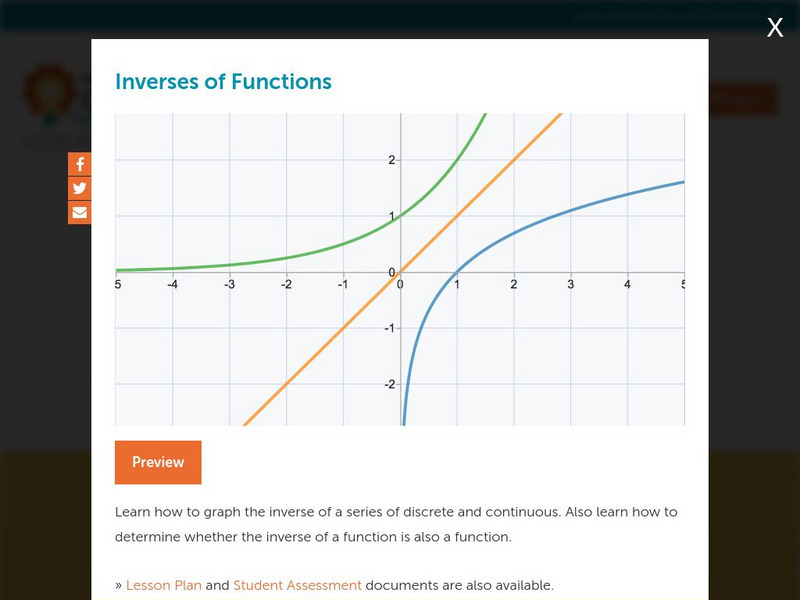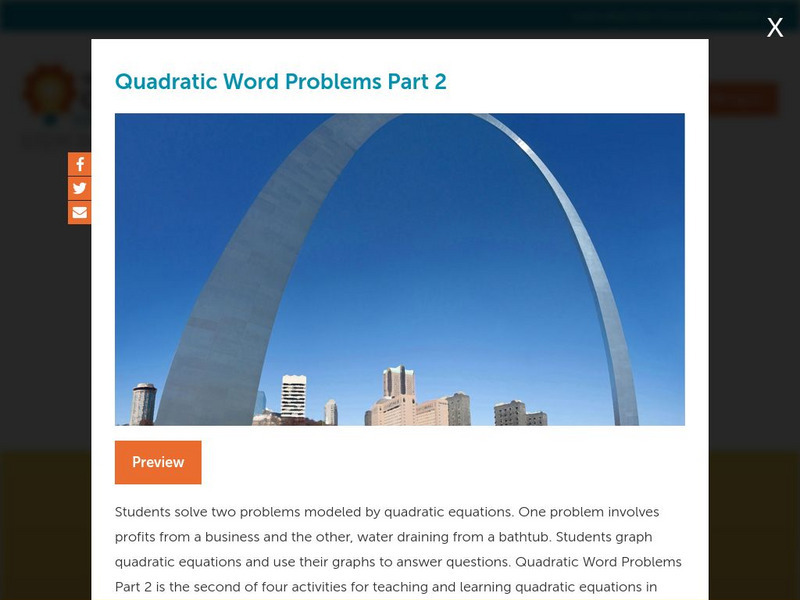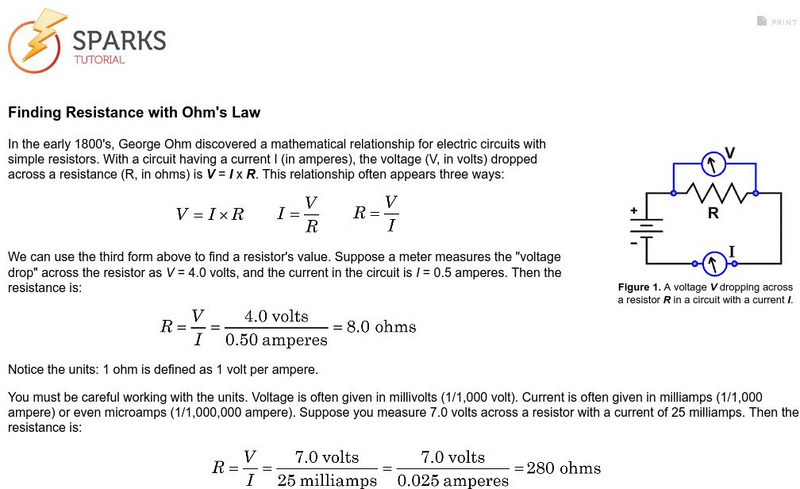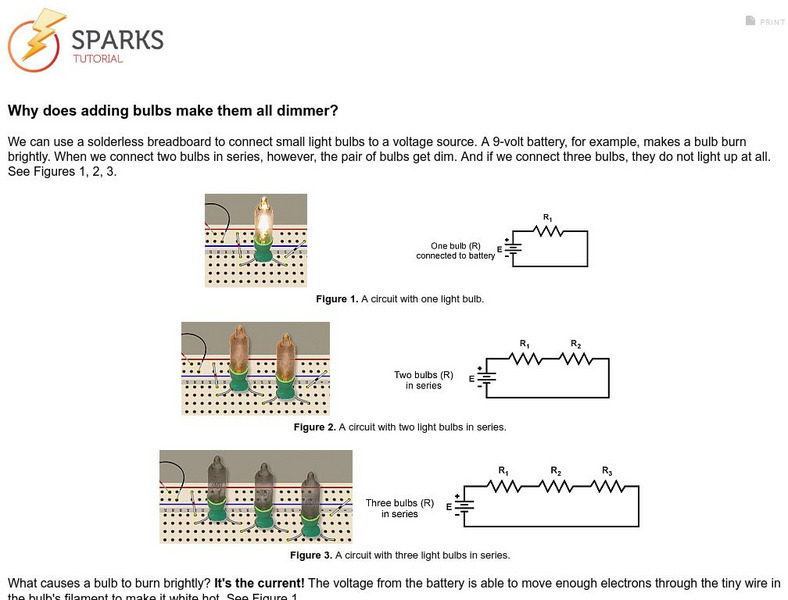Concord Consortium
Concord Consortium: Linear Equations: Points, Intercepts, and Slopes, Oh My!
Learn how to graph lines with two methods: using x- and y-intercepts and using point-slope form.
Concord Consortium
Concord Consortium: Linear Equations Word Problems
Learn to apply linear equations and their graphs to real-world problems.
Concord Consortium
Concord Consortium: Inverses of Functions
Learn how to graph the inverse of a series of discrete and continuous. Also learn how to determine whether the inverse of a function is also a function.
Concord Consortium
Concord Consortium: Dc Circuits: Parallel Resistances (Sparks 2)
Explore circuits with resistors in parallel and answer questions regarding voltage drops across resistors and currents through them in such circuits.
Concord Consortium
Concord Consortium: Dc Circuits: Series Resistances (Sparks 1)
This interactive simulation guides you through the wiring of the standard breadboard and presents you with questions regarding voltage drops and currents in series resistive circuits.
Concord Consortium
Concord Consortium: Transformations of Functions 1: Translations
This activity helps students understand translations of functions, where a translation is a movement of the function left, right, up or down.
Concord Consortium
Concord Consortium: Exponential Decay
Learn about exponential decay in real-world situations. Problems involve the application of depreciation of an asset and radioactive decay. Learn to apply exponential decay equations and interpret graphs.
Concord Consortium
Concord Consortium: Transformations of Functions 4: All Transformations
Students will understand all transformations of functions: translations, dilations and reflections. By the end of the activity students will be able to identify a function transformation, identify the way the graph will change given a...
Concord Consortium
Concord Consortium: Transformations of Functions 3: Reflections
By the end of the activity students will be able to identify a given function reflection, identify the way the graph will change and sketch a graph of the reflected function.
Concord Consortium
Concord Consortium: Transformations of Functions 2: Dilations
By the end of the module students will be able to identify a given function dilation, identify the way the graph will change and sketch a graph of the dilated function
Concord Consortium
Concord Consortium: Quadratic Word Problems Part 2
Students solve two problems modeled by quadratic equations in this learning module.
Concord Consortium
Concord Consortium: Quadratic Word Problems Part 1
Students solve two problems involving the motion of projectile objects, modeled using quadratic equations. They then graph parabolas and use the graphs to answer questions about projectile objects, and identify the maximum heights of the...
Concord Consortium
Concord Consortium: Measuring Current on a Breadboard
Find out how measuring current in a circuit is like measuring the flow rate of water in a sprinkler system.
Concord Consortium
Concord Consortium: Measuring Voltage on a Breadboard
Find out how measuring voltage in a circuit is like measuring the pressure in a water pipe.
Concord Consortium
Concord Consortium: Finding Resistance With Ohm's Law
Find out how to determine resistance using Ohm's Law.
Concord Consortium
Concord Consortium: Finding Voltage With Ohm's Law
Use this tutorial to find the voltage in an electrical current with Ohm's Law.
Concord Consortium
Concord Consortium: Finding Current With Ohm's Law
Learn how to measure the electrical current using Ohm's Law.
Concord Consortium
Concord Consortium: Total Resistance for Resistors in Series
Use the tutorial to find the total resistance for resistors in a series circuit.
Concord Consortium
Concord Consortium: Why Does Adding Bulbs Make Them All Dimmer?
This tutorial illustrates why adding bulbs to a circuit makes all the bulbs dimmer.
Concord Consortium
Concord Consortium: How Do Breadboards Work?
See how a breadboard electrical circuit works.
Concord Consortium
Concord Consortium: Troubleshooting Dc Circuits (Sparks 4)
Discover a sequence of all-resistor DC circuits in which one of the resistors is either open or short-circuited.
Concord Consortium
Concord Consortium: Dc Circuits: Series Parallel Resistances (Sparks 3)
Answer questions regarding voltage drops across resistors and currents through them in such circuits. Practice calculating the effective resistances of a set of resistances in series and parallel.
Concord Consortium
Concord Consortium: Calculating Voltage in Series Circuits
See how Ohm's Law can tell us that the voltage across resistors will depend on that current value I and each R-value.
Concord Consortium
Concord Consortium: Calculating Current in Series Parallel Circuits
Use resistance formulas to determine the total resistances of the series and parallel parts. Then, use Ohm's Law to calculate the voltage drops across and currents through each part.



